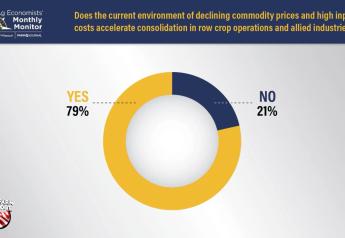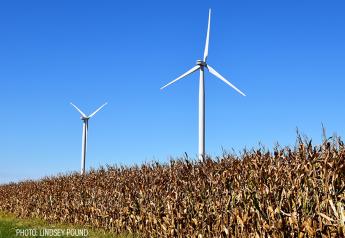Farmers Strike the Balance of Biotech and Non-GMO

Two years ago, Minnesota farmer Pat Duncanson switched 95% of his corn acres to non-GMO crops. His motivation was to save about $50 per acre. However, Duncanson learned non-GMO doesn’t fit every acre.
This year, he made changes to where he plants traits.
If you’re considering non-GMO, compare how much you’ll save on seed and any added pesticide costs with the difference in seed price for traited corn, he says. “I have about $25 extra per acre to play with this year with $3 corn, or an 8 bu. per acre advantage on my neighbors.”
Despite the upfront financial benefits, he learned field conditions and management practices dictate non-GMO success. He’s now putting in more test plots to be more strategic about trait placement and calculating return on traits.
“There are instances, like with cover crops, where we need herbicide tolerance to terminate them,” Duncanson says. “In no-till or cover crops, we definitely plant traited products for weed control.”
He also changed from mostly corn-on-corn acres to a corn/soybean rotation, which helped pest management and allowed him to plant more non-GMO hybrids. Even as he incorporates more biotech products, he plans to continue planting a portion of his corn acres to non-GMO for risk management.
After more than a decade of chasing non-GMO premiums, Indiana farmer Chris Campbell is planting all traited corn and soybeans now.
“We went a long time trying to capitalize on the market premium and lower cost,” Campbell says. “It seems the premiums aren’t there as often—the last time we planted non-GMO we only got a premium on 10% of our corn.”
It was a hard change after planting 100% non-GMO—the first biotech seed bill after switching hurt. “We spend $30,000 more on seed, or about $26 per acre more,” he says.
He was pleasantly surprised when he saw his herbicide bill, though. “I’m spending about $18 per acre on herbicides,” Campbell says. “When we planted non-GMO corn it was closer to $28 per acre.”
In soybeans, he’s gone from $50 to $20 per acre in herbicide costs. However, herbicide savings might not always be this drastic. Duncanson’s non-GMO herbicide bill is at or below that of his traited products. It all depends on weeds—more pressure means more benefit from herbicide tolerant traits.
While Duncanson manages GMO and non-GMO corn, Campbell prefers to go with one or the other.
“The logistics of cleanout with both is difficult and a substantial cost,” Campbell says. If you choose to keep both, have a procedure in place to preserve the identity of non-GMO crops for potential premiums.
Duncanson and Campbell haven’t seen any big yield advantages from non-GMO versus GMO. Also non-GMO seed prices have risen since Duncanson started planting them in 2015, but seed is easier to get.
Be sure to take marketing opportunity, logistics, agronomics, added costs and product availability into account before making any switch.
“I’m still willing to raise non-GMO,” Campbell says. “But I’ve got to have a dependable market and a decent premium—unfortunately they both fluctuate.”







